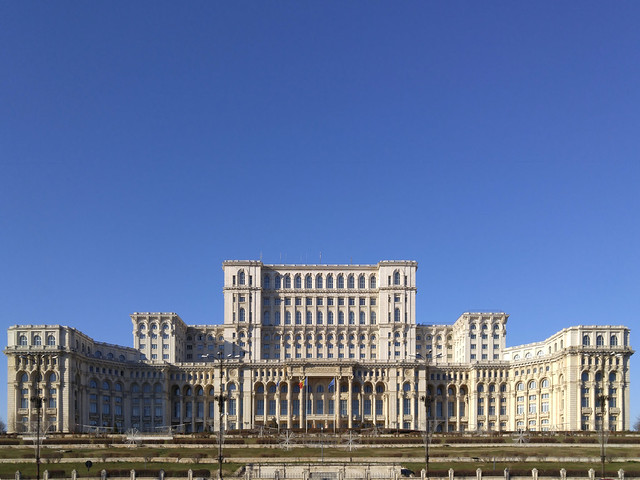The first thing I have to say about Cixin Liu’s “The Three-Body Problem” is that it is not only a good science-fiction novel, but also a good novel irrespective of genre: it transcends the limits of science-fiction and deserves a place on any reading list. The book benefits from an excellent English translation by Ken Liu, the author of “The Grace of Kings”, a fantasy novel which I had read with pleasure. The story is set (mostly) in the People’s Republic of China, from the violent beginnings of the Cultural Revolution in the late 1960s to the present day. The harsh realities and the complicated imaginary of the People’s Republic permeate the novel; as in all totalitarian states, the ideology and generally the political mythology and the associated rituals are quite often great forces of immediate and considerable practical importance. Fortunately the translator provides many footnotes (hyperlinked in the electronic version) to help the European or American reader understand the setting in its exotic details.
Now I don’t want to be misunderstood—this is a science-fiction novel; or possibly a fantasy novel, depending on where the reader places the boundaries between science-fiction and fantasy. The story could have been set in the Soviet Union, in the United Kingdom or the United States; but then it would have been a very different novel. The Chinese setting is important; moving the story to any other great country would have required considerable alterations in order to maintain an air of verisimilitude.
Some readers may be reluctant to accept certain more fantastic aspects of the story; one may observe a gradual progression throughout the novel from plain historical fiction, to ordinary science fiction, to hard science fiction, to mild fantasy, to mind-blowing fantasy; the perceived problem is that the mind-blowing fantasy elements are presented as if they were science fiction, and this is what I found somewhat grating in the final part of the book, where the fantastically fantastic elements agglomerate to create unforgettable images. I don’t know how to explain this better, other than to say that “The Three-Body Problem” is to science-fiction as “Hero” or “House of Flying Daggers” are to historical films: everything is amplified until the boundaries between science-fiction and fantasy melt into a haunting kaleidoscopic image.
(This review was posted on Goodreads on 5-Jan-2015.)
Condică de sine aşezătoare despre unele întâmplări, fapte, spuse şi vedenii ce s-au întâlnit aiurea şi în Ţara Românească, ce se zice şi Ungrovlahia, sau pe Slavoneşte încă şi Vlaşcaia Zemlea
5 ianuarie 2016
3 ianuarie 2016
Casa Poporului de Ziua Republicii
De ziua Republicii, născută aşa cum s-a născut ea, să nu ne mai aducem acum aminte cum, fiind o dimineaţă însorită cu lumina rece şi tăioasă a iernii, am ieşit cu un fel de aparat de fotografiat să-i fac o poză Casei Poporului, sau, cum îi spun vremelnicii ei chiriaşi, Palatul Parlamentului, fiind ea un monument întru totul reprezentativ pentru geniul acestei Republici -- nesimţitoare, masivă în nemişcarea-i şi împodobită cu podoabele unor forme puţin înţelese, încă şi mai puţin apreciate şi aproape deloc internalizate în gândirea colectivă a naţiunii, ca un ideal terestru al unei minţi lipsite de idealuri şi fericite într-această lipsă.

Soare şi cer senin, albastru cum numai iarna sau toamna târziu se întâmplă să fie în Bucureşti, vântul nu bătea aproape deloc, piaţa Constituţiei era aproape goală, condiţii bune, nimic de zis, obiectiv telefonic grandangular, luminos, şi un subiect atât de static şi plin de detalii: ce să mai spun? Am căutat eu să mă plasez fix pe axa clădirii, dar neavând teodolitul la mine nu am reuşit exact-exact, dar am fost aproape. Turişti erau câţiva, când nu sunt turişti să-i facă poze Casei Poporului? Asta a ieşit, asta e. A fost ziua Republicii.

Casa Poporului, fotografiată de ziua Republicii, în lumina rece a soarelui de iarnă. (Fotografie de Alex Pănoiu, disponibilă pe Flickr)
Soare şi cer senin, albastru cum numai iarna sau toamna târziu se întâmplă să fie în Bucureşti, vântul nu bătea aproape deloc, piaţa Constituţiei era aproape goală, condiţii bune, nimic de zis, obiectiv telefonic grandangular, luminos, şi un subiect atât de static şi plin de detalii: ce să mai spun? Am căutat eu să mă plasez fix pe axa clădirii, dar neavând teodolitul la mine nu am reuşit exact-exact, dar am fost aproape. Turişti erau câţiva, când nu sunt turişti să-i facă poze Casei Poporului? Asta a ieşit, asta e. A fost ziua Republicii.
Abonați-vă la:
Postări (Atom)